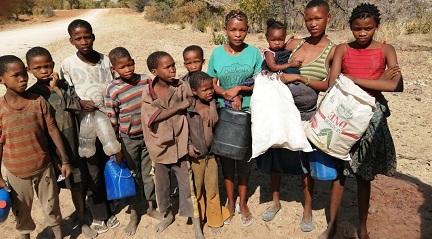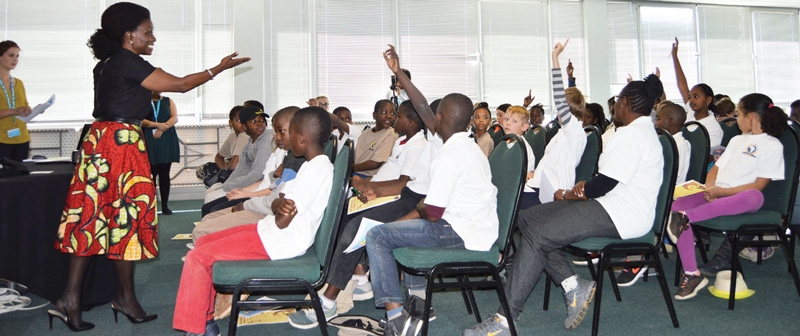
Catching water when it rains

Since 2006, German and Namibian researchers have been working on technologies to enable a round-the-year water supply for rural communities within the framework of the CuveWaters research project led by ISOE –Institute for Social Ecological Research. This project collects and stores rainwater will be transferred officially to the community of Epyeshona next week.
Various pilot plants have been built since the start of the project in 2006 at several sites in Owamboland in close cooperation with the local population taking the pressure off the central water supply system.
The project stores rainwater that is collected on roofs and on ground catchments areas in undergound bunkers. The rainwater is collected during the rainy season and then utilised during the dry season. The project supplies both potable and irrigation water. The vegetables produced are either used for own consumption or sold at local markets, to increase local self-sufficiency and generate income.
The local cooperating partners are the Ministry of Agriculture, Water and Forestry (MAWF), the Outapi Town Council and the Desert Research Foundation of Namibia (DRFN). Besides Epyeshona there are project sites in Outapi, Iipopo, Akutsima and Amarika.
The rainwater harvesting plants in Epyeshona started as pilot plants that were developed by the Technische Universität Darmstadt and have been used successfully since 2010.
Also within the scope of the project several households received household retention tanks from which small gardens can be irrigated close to the houses. In the communal approach rainwater is harvested from a ground catchment area and then used for irrigation by the community.
The water is stored in tanks and ponds of different materials and can then be pumped into smaller raised tanks when needed for the drip irrigation system.
The users also sell vegetables on the market. “Our village really changed, our village now is so very developing because some of the houses have a garden”, says Emerita Iipinge, the acting Headwoman of Epyeshona and a participant in the project.
”Even a small garden for tomatoes or for spinach or green pepper, guavas, mangoes and some trees, can be watered. Now the people understand how they can plant and how they can make their own food” Iipinge said.
“All farmers were trained in agriculture and in efficient water use. [This is an] example for German Namibian cooperation. The fact that we succeeded in establishing rainwater harvesting in this region is an excellent result of the close cooperation with the local population”, commented project leader Thomas Kluge from the ISOE.
He described the storing of water as a strategy to mitigate the risks of climate change. “With the help of small-scale plants like these our project demonstrates how natural water could be tapped sustainably in other dry regions of this planet as well”.
The joint project is funded within the Integrated Water Resources Management programme by the German Federal Ministry of Education and Research. It is part of the Funding priority “Sustainable Water Management”.












































